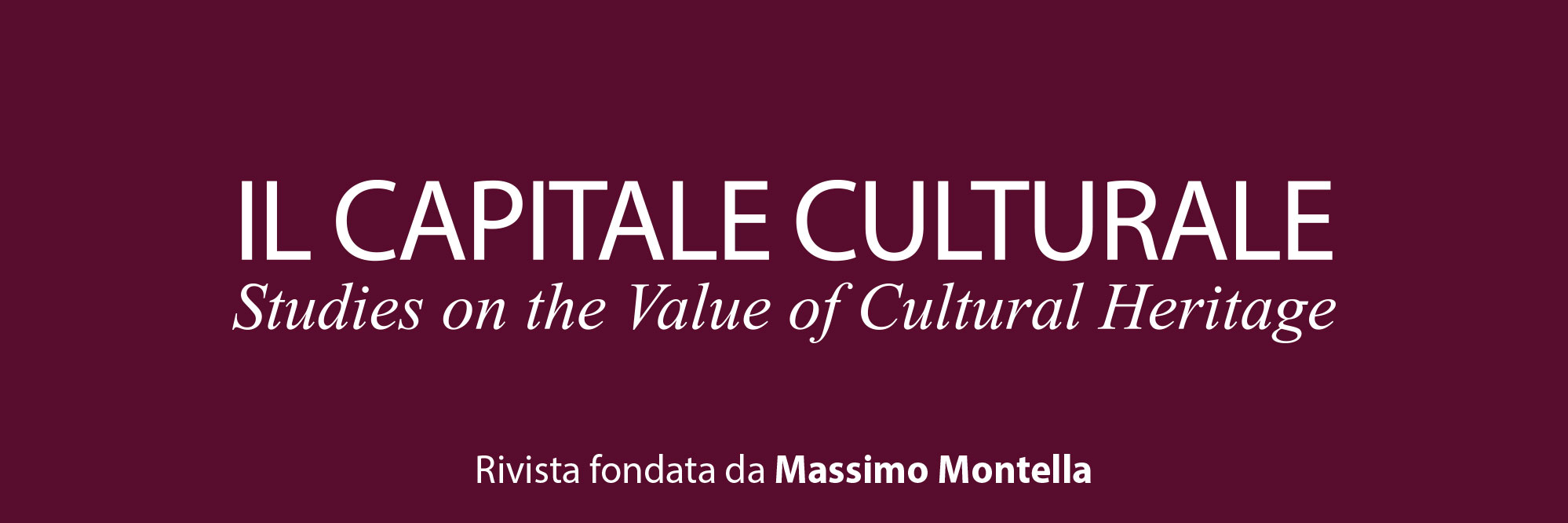What’s Love Got to Do with It? Ovid, the “Love of the Gods,” and Cinquecento Carved Cassoni
Downloads
Additional Files
- Information on Author and Acknowledgment
- Figure 1 Unknown, Left: Sea-God and Nereid; Right Europa and the Bull, second half of the 16th century, wood (walnut) carved and gilded, 57 x 88 x 67.5 cm, St. Petersburg: Hermitage Museum, Inventory number Эпр-6791
- Figure 2 Titian, The Rape of Europa, 1560-62, oil on canvas, 178 x 205 cm, Boston: Isabella Stewart Gardner Museum.
- Figure 3 Liberale da Verona, The Rape of Europa, 1475-1500, oil on wood, Paris: Musée du Louvre.
- Figure 4 Unknown, Nessus and Deianira, late sixteenth century, Venice: Galleria Giorgio Franchetti alla Ca’ d’Oro.
- Figure 5 Unknown, Left: Leda and the Swan; Right: Apollo with an orb, 1580-89, walnut, 65 x 171.5 x 61 cm, Boston: Isabella Stewart Gardner Museum. Accession number F15s7
- Figure 6 Unknown, Left: Ganymede and the Eagle; Right: Woman with an Orb, 1580, 62 x 178 x 58 cm, private collection. Reference number LVS509
- Figure 7 Attributed to Franceso Melzi, Leda, oil on panel, 1508-15, 130 x 77.5 cm, Florence: Galleria degli Uffizi.
- Figure 8 Cornelis Bos, Leda and the swan, 1544-66, engraving, 30.2 x 41.3 cm, New York: The Metropolitan Museum of Art. Accession number 57.658.153
- Figure 9 Peter Paul Rubens, The Abduction of Ganymede, oil on canvas, 1611-12, 203 x 203 cm, Vienna: Schwarzenberg Palace.
- Figure 10 Workshop of Apollonio di Giovanni di Tomaso and Marco del Buono di Marco, Rape of Ganymede, tempera on panel, after 1465, 38 x 40 cm, Boston: Museum of Fine Arts. Accession number 06.2441
Pubblicato
Fascicolo
Sezione
Licenza
Tutti i materiali pubblicati sono coperti da copyright, mantenuto dall'Università di Macerata che ne supporta finanziariamente e tecnicamente la pubblicazione.
La licenza adottata è la Creative Commons - Attribuzione/Condividi allo stesso modo. Ovvero, gli autori che pubblicano su questa rivista accettano le seguenti condizioni:
- Gli autori mantengono i diritti sulla loro opera e cedono alla rivista il diritto di prima pubblicazione dell'opera, contemporaneamente licenziata sotto una Licenza Creative Commons - Attribuzione che permette ad altri di condividere l'opera indicando la paternità intellettuale e la prima pubblicazione su questa rivista.
- Gli autori possono aderire ad altri accordi di licenza non esclusiva per la distribuzione della versione dell'opera pubblicata (es. depositarla in un archivio istituzionale o pubblicarla in una monografia), a patto di indicare che la prima pubblicazione è avvenuta su questa rivista.
- Gli autori possono diffondere la loro opera online (es. in repository istituzionali o nel loro sito web) prima e durante il processo di submission, poiché può portare a scambi produttivi e aumentare le citazioni dell'opera pubblicata.
DOI:
https://doi.org/10.13138/2039-2362/3278Abstract
In his account of the contest between Pallas and Arachne, Ovid described the latter’s woven work as an elaborate representation of the destructive and uninhibited nature of the Olympian gods when their lust overwhelmed their common sense – a record of their seductions, rapes, and abductions of mortals (Ovid, Met. 6. 103–128). That passage, together with a longer retelling of each individual myth in Ovid’s Metamorphoses, created a fertile ground for early modern artists to portray erotic and/or violent scenes between men and women or, in some cases, between men and other, often younger, men. Most notable are the visual representations of myths about the “love of the gods,” for example, the rape of Europa and the seduction of Leda on Cinquecento carved cassoni, which place the myths and their import in the context of sixteenth-century domesticity. In this study, I explore these images with a view toward the didactic messages that they might have conveyed and suggest that through such myths, the bride was exhorted to act in a chaste manner and the groom was warned against succumbing to lust.
Riferimenti bibliografici
Baskins C.L. (1998), Cassone Painting, Humanism, and Gender in Early Modern Italy, Cambridge: Cambridge University Press.
Boccaccio G. (2001), Famous Women, edited and translated by V Brown, Cambridge and London: The I Tatti Renaissance Library and Harvard University Press.
Boorsch S., edited by (1982), The Illustrated Bartsch 29: Italian Masters of the Sixteenth Century, New York: Abaris Books.
Brumble D.H. (1998), Classical Myths in the Middle Ages and Renaissance: A Dictionary of Allegorical Meanings, Westport: Greenwood Press.
Calderai F., Chong A. (2011), Furnishing a Museum: Isabella Stewart Gardner’s Collection of Italian Furniture, Boston: Isabella Stewart Gardner Museum, 2011.
Cieri Via C., edited by (1996), Immagini degli dei: Mitologia e collezionismo tra ‘500 e ‘600, Venice: Leonardo Arte.
Cohen E.S., Cohen T.V. (2019), Daily Life in Renaissance Italy, 2nd Ed., Santa Barbara, CA: ABC-CLIO, LLC.
Colle E. (2009), Il mobile in Italia: dal Cinquecento all’Ottocento, Milan: Electa.
Colombo S. (1981), L’arte del legno e del mobile in Italia: mobili, rivestimenti, decorazioni, tarsie dal medioevo al XIX secolo, Busto Arsizio: Bramante Editrice.
Conti N. (1612), Natalis Comitis Mythologiae, sive explicationis fabularum, libri decem: in quibus omnia propè naturalis & moralis philosophiae dogmata contenta fuisse demonstratur, Genevae: Excudebat Samuel Crispinus.
Conti N. (2006), Natale Conti’s Mythologiae, translated by J. Mulryan and S. Brown, Tempe: Arizona Center for Medieval and Renaissance Studies.
D’Elia A.F. (2002), Marriage, Sexual Pleasure, and the Learned Brides in the Wedding Orations of Fifteenth-Century Italy, «Renaissance Quarterly», 55, no. 2, pp. 379-433.
Da Bologna V. (1525), Preclara operetta dello ornato delle donne, et de alquante cose de consienza circa el matrimonio, presentation by L. Alberti, Bologna: Girolamo Benedetti.
Da Siena C. (1888), Regola della vita matrimoniale, ed. Francesco Zambrini and Carlo Negroni, Bologna: Romagnoli; repr., Bologna: Commissione per i testi di lingua, 1987.
De Marchi A., Sbaraglio L., edited by (2015), Le opere e i giorni: exempla virtutis, favola antiche e vita quotidiana nel racconto dei cassoni rinascimentali, Signa: Masso delle Fate.
Deacy S. (2018), Why Does Zeus Rape? An Evolutionary Psychological Perspective, in Violence in the Ancient and Medieval Worlds, edited by M.C. Pimentel, N.S. Rodrigues, Leuven: Peeters, pp.103-116.
Draper J.D. (1971), For the Love of Leda, «The Metropolitan Museum of Art Bulletin», 30, no. 2, pp. 50-58.
Even Y. (1997), On Man, Woman, and Centaur in Giambologna’s Art, «Source-Notes in the History of Art», 16, no. 3, pp. 1-6.
Even Y. (2001), Commodifying Images of Sexual Violence in Sixteenth-Century Italy, «Notes in the History of Art», 20, no. 2, pp. 13-19.
Even Y. (2004), On the Art and Life of Collective Sexual Violence in Renaissance Italy, «Notes in the History of Art», 23, no. 4, pp. 7-14.
Even Y. (2005), Nessus’s Abduction of Deianira: A Subject for All Seasons, «Explorations in Renaissance Culture», 31, no. 2, 189-209.
Faenson L.I. (1983), Italian Cassoni from the Art Collections of Soviet Museums, translated by A. Shkarovsky-Raffé, Leningrad: Aurora Art Publishers.
Fogolari G. (1956), La Galleria Giorgio Franchetti alla Ca’ d’Oro di Venezia, 3rd Ed, Rome: Istituto poligrafico dello stato.
Freedman L. (2011), Classical Myths in Italian Renaissance Painting, Cambridge: Cambridge University Press.
Gabbard K.E. (1979), From Hubris to Virtu: Centaurs in the Art and Literature of Fifth Century Greece and Renaissance Florence, PhD diss., Indiana University.
González-Palacios A. (1996), Il Mobile in Liguria, Genoa: Sagep Editrice.
Hathorn R.Y. (1977), Greek Mythology, Beirut: The American University of Beirut.
Lauriola R. (2022) Brill’s Companion to Episodes of ‘Heroic’ Rape/Abduction in Classical Antiquity and their Reception, Leiden, Boston: Brill.
Marongiu M., edited by (2002), Il mito di Ganimede, prima e dopo Michelangelo, Florence: Casa Buonarroti.
McComb A.K. (1924), The Life and Works of Francesco di Giorgio, «Art Studies», 2, pp. 20-21.
Medlicott R.W. (1970), Leda and the Swan: An Analysis of the Theme in Myth and Art, «Australian and New Zealand Journal of Psychiatry», 4, no. 15, pp. 15-23.
Meyer B.H. (1990), Leonardo’s Hypothetical Painting of ‘Leda and the Swan’, «Mitteilungen des Kunsthistorischen Institutes in Florenz», 34, no. 3, pp. 279-294.
Murray K.S-J., Simone, A.A. (2015), The Liminal Feminine: Illuminating Europa in the Ovide Moralisé, in Reception of Antiquity: Constructions of Gender in European Art, 1300–1600, edited by M. Rose, A.C. Poe, Leiden: Brill, pp. 80-97.
Musacchio J.M. (2008), Art, Marriage, and Family in the Florentine Renaissance Palace. New Haven: Yale University Press.
Ovid (1916), Metamorphoses, Books 1-8, translated by Frank Justus Miller, Cambridge: Harvard University Press.
Paolini C. (2006), Chests, in At Home in Renaissance Italy, edited by M. Ajmar-Wollheim, F. Dennis, London: V&A, pp. 120-121.
Pedrini A. (1925), L’ambiente il mobilio e le decorazioni del rinascimento in Italia, Turin: Casa Editrice Italia ARS.
Pollali A. (2018), Introduction: Renaissance Sexuality and Myth Making, in Images of Sex and Desire in Renaissance Art and Modern Historiography, edited by A. Pollali, B. Hub, New York and London: Routledge, pp. 1-7.
Rocke M. (1996), Forbidden Friendships: Homosexuality and Male Culture in Renaissance Florence, New York and Oxford: Oxford University Press.
Rossoni E. (2002), Il bianco e cigno: metafore d’amore nell’arte italiana del XVI secolo, Nuoro: Ilisso.
Rowell C. (2015), Florentine ‘Cassoni’ at Blickling, Knole and Cliveden, «Furniture History», 51, pp. 21-49.
Santini C. (2002), Mille mobili Veneti: L’arredo domestico in Veneto dal sec. XV al sec. XIX, volume terzo: Venezia, Modena: Artioli.
Saslow J.M. (1986), Ganymede in the Renaissance: Homosexuality in Art and Society, New Haven: Yale University Press.
Schottmüller F. (1921), Furniture and Interior Decoration of the Italian Renaissance, New York: Brentano’s.
Schubring P. (1915), Cassoni: Truhen Und Truhenbilder Der Italienischen Früh-Renaissance Ein Beitrag Zur Profanmalerei im Quattrocento, Leipzig: K.W. Hiersemann.
Spike J., edited by (1985), The Illustrated Bartsch 30: Italian Masters of the Sixteenth Century, Enea Vico, New York: Abaris Books.
Syson L., Thornton D. (2001), Objects of Virtue: Art in Renaissance Italy, Los Angeles: J. Paul Getty Museum.
Talvacchia B. (1999), Taking Positions: On the Erotic in Renaissance Culture, Princeton: Princeton University Press.
Thornton P. (1984), Cassoni, Forzieri, Goffani and Cassette: Terminology and Its Problems, «Apollo», CXX, pp. 246-251.
Thornton P. (1991), The Italian Renaissance Interior, 1400-1600, London: Weidenfeld and Nicolson.
Tinagli P. (1997), Women in Italian Renaissance Art: Gender, Representation, Identity, Manchester: Manchester University Press.
Vasari G. (1878), Le Vite de’ Più Eccellenti Pittori, Scultori ed Architettori, edited by G. Milanesi, Florence: G. C. Sansoni.
Verheyen E. (1991), The Palazzo del Te in Mantua: Images of Love and Politics, Baltimore and London: The John Hopkins University Press.
Vinco M. (2018), Cassoni: pittura profana del rinascimento a Verona, Milan: Officina libraria.
Wallace W.E. (2001), Michelangelo’s Leda: The Diplomatic Context, «Renaissance Studies», 15, no. 4, pp. 473-499.
Witthoft B. (1982), Marriage Rituals and Marriage Chests in Quattrocento Florence, «Artibus et Historiae», 3, no. 4, pp. 43-59.
Wolfthal D. (1999), Images of Rape: The “Heroic” Tradition and its Alternatives, Cambridge: Cambridge University Press.
Zarri G. (2015), Eyes and Heart, Eros and Agape: Forms of Love in the Renaissance, «Historical Reflections», 41, no. 2, pp. 53-69.




